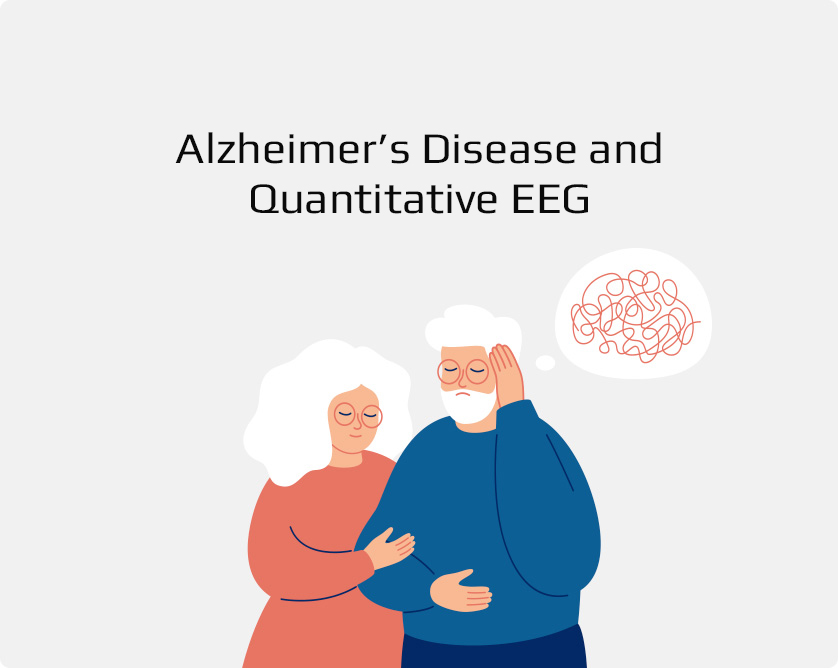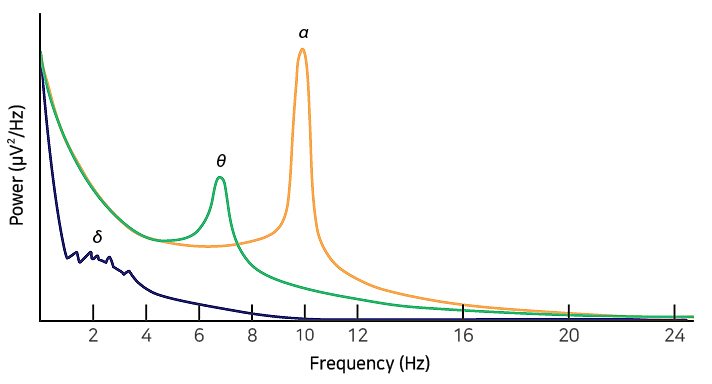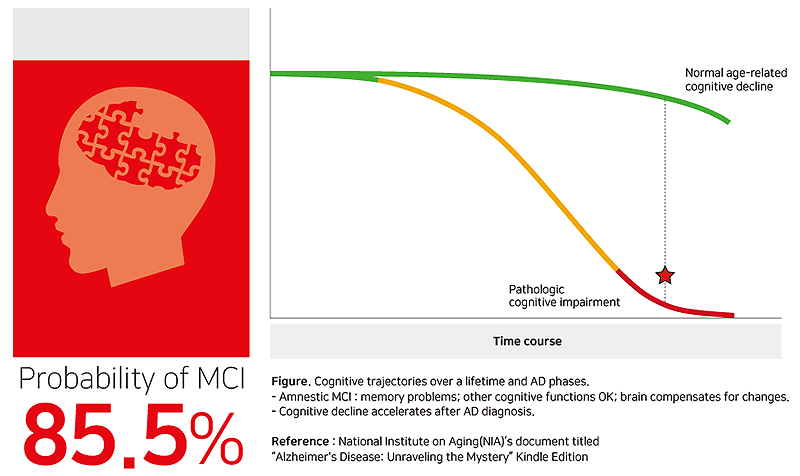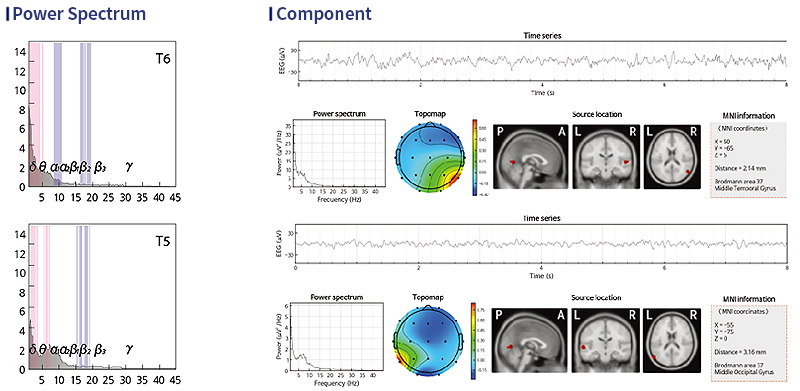
ALZHEIMER’S DISEASE DEMENTIA and QEEG
Alzheimer’s disease dementia is a condition in which severe cognitive impairment caused by Alzheimer’s disease
and deterioration of function to the extent that independent daily life is impossible.
In general, power is reduced in all bands, the alpha rhythm that maintains the brain network at rest is almost lost,
and the theta wave increases as well as the delta wave pattern.
According to preceding QEEG research, EEG shows sensitive changes from when functional deterioration occurs
before severe structural changes happen in the brain. ‘Slowing brainwaves’ is the main feature, and it is observed
as below.

with Healthy aging people’s EEG, normal brain waves such as alpha wave is observed.
with Mild cognitive impairment patient’s EEG, slow wave such as theta wave is observed.
with Alzheimer’s dementia patient’s EEG, very slow wave such as delta wave and theta wave are observed.
CASE REVIEW
Participant information
– Age : 70/Female / Diagnosed with Alzheimer’s disease dementia
| aMCI Screening

Compared to healthy people, an increase in the slow
wave, theta wave, was observed in both temporal
lobes, and an increase in the slower wave, delta wave,
was observed in all regions. The loss of the alpha
wave, the background rhythm, was observed.
Compared to healthy people, beta waves generally
decrease. This means that as cognitive impairment
progresses EEG slows down, and the compensation
effect of beta waves generated from healthy brain
regions decreases.
| Band Power – Topomap


Compared to healthy people, Slow Wave (Delta Wave, Theta Wave) makes up an area without a common
conspicuous peak in Power Spectrum and Component.
| 3D VIEW

Compared to healthy people, the slower wave, theta wave, increased in both temporal lobes and the slower
wave, delta wave, increased in all regions.










